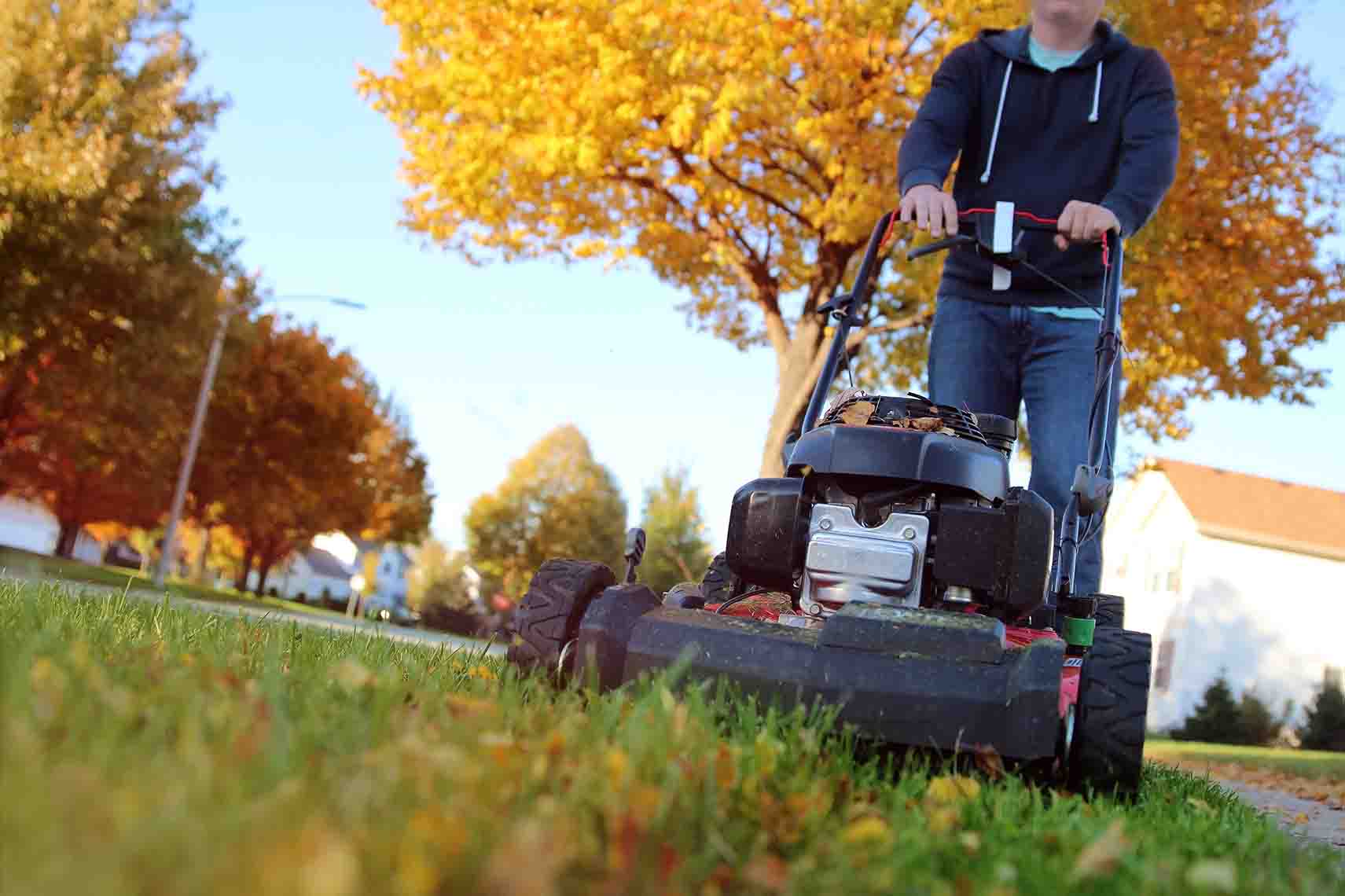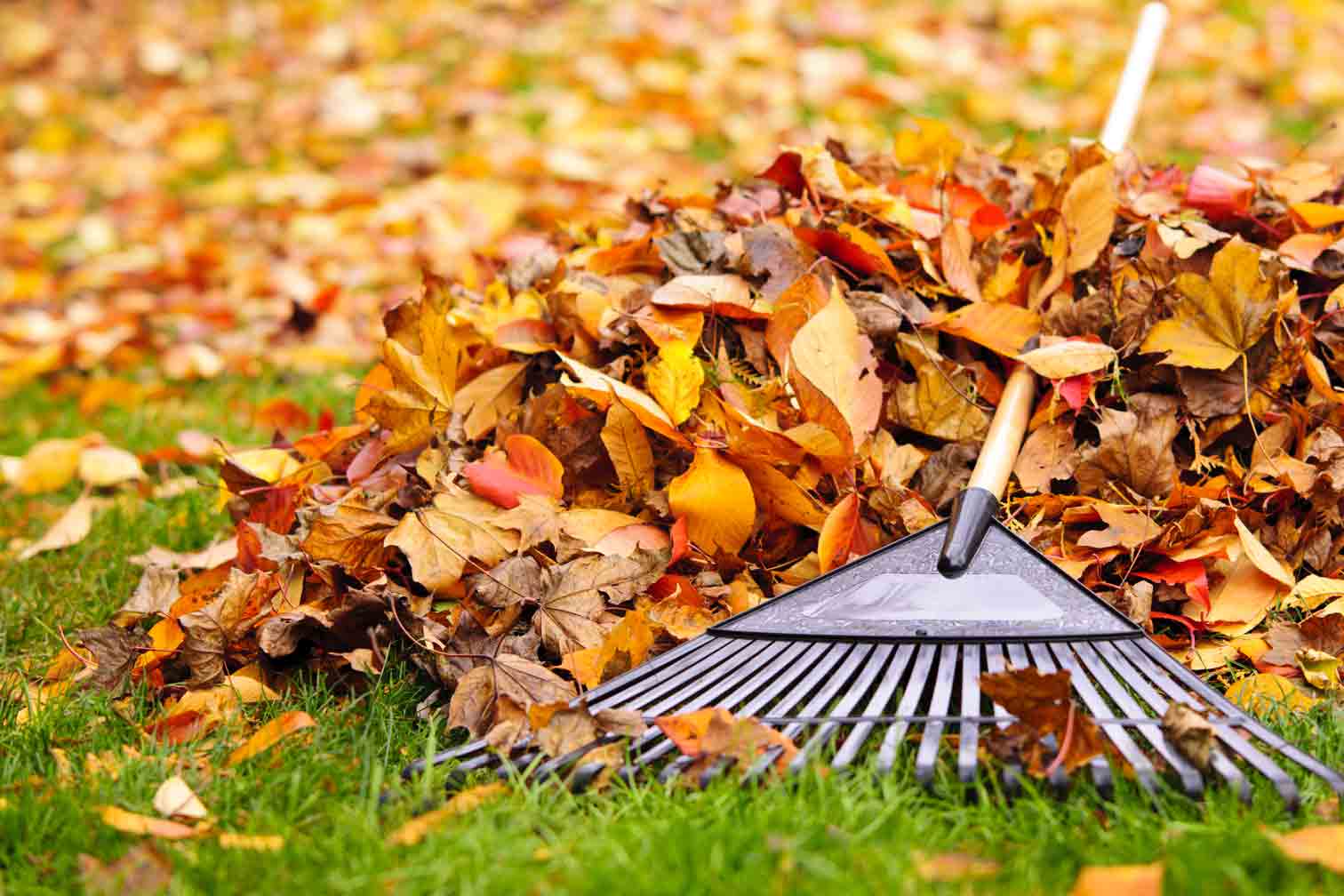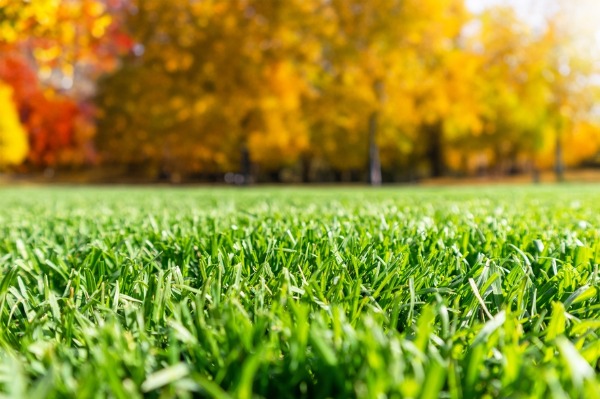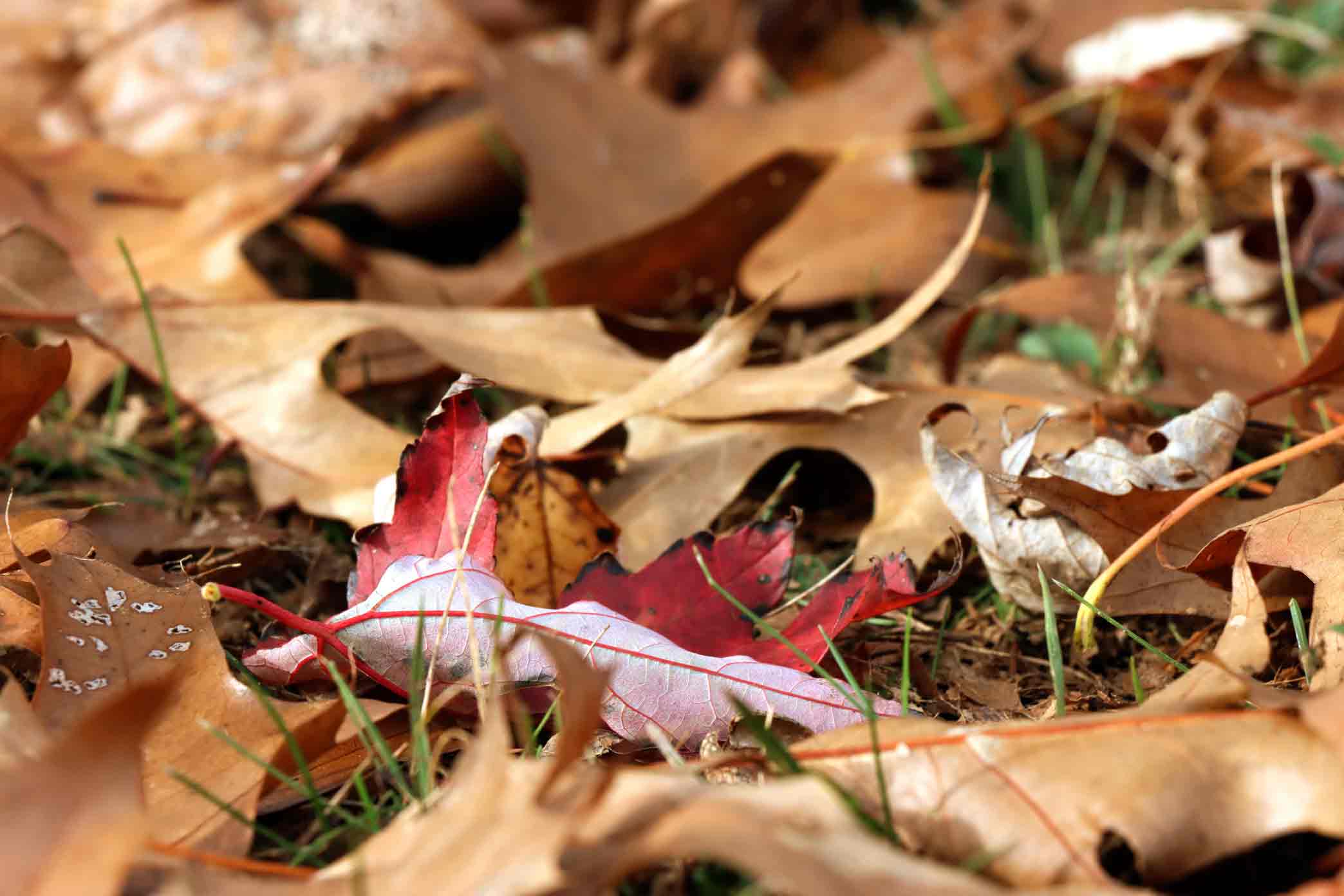Last Updated:
August 16, 2025
When autumn sets in and trees shed their colorful foliage, lawns across the neighborhood disappear beneath a blanket of leaves. For homeowners, this seasonal spectacle brings with it a familiar question: should you rake the leaves into piles for removal or simply mow over them to let them break down naturally?
Come find out which method of leaf removal is most effective for proper yard cleanup and preserving the health of your lawn and plants.

Mowing over leaves, also known as leaf mulching, involves passing a lawn mower over fallen leaves to chop them into small pieces. These fragments then filter down between grass blades, where they decompose and feed the soil. Some homeowners use specialized mulching mowers for this job, while others adapt their standard rotary mowers by making multiple passes until the leaves are reduced to fine bits.
When done correctly, leaf mulching can save considerable time and effort compared to raking. It’s particularly attractive to those with large yards, limited time, or a desire to avoid repetitive bending and lifting. In addition, the organic matter from decomposing leaves improves soil structure over time, helping it retain moisture and nutrients. Mulching also keeps leaves out of landfills, reducing yard waste.
Benefits of mowing over leaves include:

Raking leaves has been the go-to lawn care task for generations. Using a rake, or more modern tools like leaf blowers, homeowners gather leaves into piles for bagging, composting, or hauling away. This method is undeniably more labor-intensive than mowing, but it provides precision and thoroughness that mulching often can’t match.
Raking is especially beneficial for lawns with heavy tree cover, where thick layers of leaves could suffocate the grass if left in place. It also helps prevent the damp, shaded conditions that promote fungal growth and insect infestations. From a purely aesthetic standpoint, raking leaves leaves the yard looking crisp and clean, which is something many homeowners and neighborhood associations value.
Advantages of raking leaves include:

While mulching leaves can be beneficial when done under the right conditions, raking generally offers greater protection for the lawn, especially if the goal is to maintain turf density and prevent seasonal problems. The primary reason is that raking removes all leaf matter, eliminating the risk of smothering and ensuring sunlight can reach grass blades during fall’s shorter daylight hours. This extra sunlight is important because grass uses the fall season to store energy for winter dormancy and spring regrowth.
Another benefit of raking is improved airflow and moisture balance at the soil surface. Mulched leaves, particularly when damp, can trap excessive moisture, creating an ideal environment for fungal diseases like snow mold. Removing the leaves altogether prevents this issue, which can be especially important for lawns already prone to turf diseases or in regions with long, wet winters.

For many homeowners, the healthiest and most efficient approach is not to pick one method exclusively, but to combine them strategically. This hybrid method allows you to enjoy the nutrient recycling benefits of mulching while avoiding the risks of overloading your lawn with organic debris.
One common approach is to mulch early in the fall when leaf coverage is light and manageable, then switch to raking later in the season when leaf fall is heaviest. This way, the soil benefits from some organic matter while the lawn enters winter free of dense debris. Another option is to rake heavily covered or problem-prone areas, like shaded spots or low-lying sections prone to holding moisture, while mulching leaves in sunny, open areas where decomposition happens more quickly.
A balanced leaf management routine might look like this:

No matter which method you choose, following best practices will help you achieve the best possible results for your lawn.
If mowing over leaves:
If raking leaves:
The choice between raking and mowing over your leaves depends on your property’s unique conditions, your lawn’s health, and your willingness to invest time and effort. Mowing over leaves works well for light to moderate leaf coverage, but raking is better suited for heavy leaf coverage to preserve lawn health.
If you need help taking care of the leaves in your yard this fall, call Heartland for the best yard cleanup service in Kansas City!